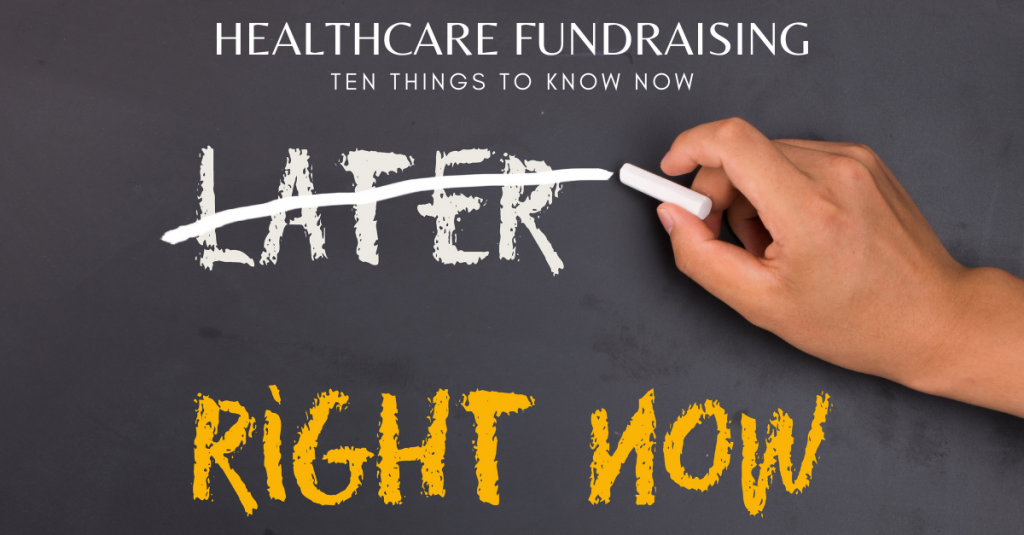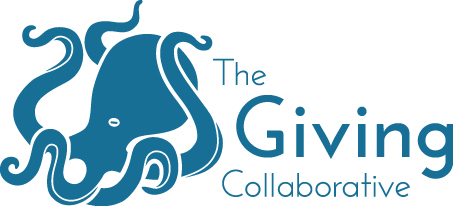
As with all industries, there are both opportunities and challenges facing healthcare at the moment. We’re going to break some of those issues down and discuss how to focus more on the opportunities and strategize on dealing with the challenges.
HEALTHCARE FUNDRAISING – TEN THINGS TO KNOW NOW
First, the good news there is no better time than now to be working in healthcare fundraising! Healthcare is being viewed with great positivity, and most people believe that healthcare workers are indeed heroes. In fact, according to a recent Gallup survey which tracks Americans’ views of various business and industry sectors, Healthcare went up 20 percentage points in positivity over one year ago with the majority of people surveyed having a positive overall view of the sector.
There are immense opportunities for healthcare fundraisers right now:
- Now is an excellent time to educate (qualify and cultivate too!) donors eager for reassurance and information from medical experts. Recruit physicians, nursing staff, or hospital executives to share facts about things that matter to your donors. Keep the information local.
- You may have more time to steward loyal donors – since in-person meetings are still not happening on a broad scale, this should open up time for gift officers to provide more attention to long-time donors.
- Your context for conversation/elevator speech should include compelling references about how critical your organization’s work is. Community members and potential donors are responding positively to this messaging right now.
- Non-essential medical procedures are coming back, which means more opportunity for grateful patients. Ensure you have an active grateful patient program in place and, now more than ever, cultivate those relationships with your medical staff.
- Your healthcare organization is likely getting lots of donations – from much-needed cash to PPE, meals, and other gifts. Be sure to capture all of these gifts and calculate the monetary value for your metrics. The donors of these items must be thanked and appropriately stewarded.
What about those challenges that we mentioned?
- Many hospitals are in challenging financial situations right now, putting a strain on capital projects and, potentially, more pressure on your advancement team to bring in funding. Philanthropy used to be “icing on the cake” for capital projects. But, now, teams are expected to raise all or most of the needed funding. This creates a perfect opportunity to make the case to senior administrators that your philanthropy efforts will be more effective if you work together in a coordinated and collaborative effort. Recruiting leadership to help with the cultivation and solicitation of donors is an effective strategy, and your case for this collaboration has never been stronger.
- It isn’t easy to cultivate new donors right now. You don’t have in-person events to invite them to attend, and you may not be able to meet in person for a meal or a cup of coffee. But, as challenging as it is, donors have been growing more comfortable with virtual meetings, and, hopefully, you have been growing savvier with technology yourself. And schedules are generally easier to navigate when the meeting is taking place online from the comfort of your donor’s home.
- Budget cuts are a reality of many industries, and healthcare is not immune. If you are part of a healthcare system, look at the possibility of shared positions and shared resources. This is a huge opportunity to save money and offer a unique and flexible arrangement for some staff members. If you are not part of a system, get creative with outsourcing some of your needs to avoid the costs associated with FTE employees.
- Since many healthcare organizations are a community asset and are very rooted in their local community, many organizations tend to be very event driven. In the past, events were a fantastic way to connect with your donors and your local community. However, organizations have seen the tremendous success of moving their events to a virtual format. Seek help from those who have already demonstrated success and don’t be afraid to try this new fundraising method. Another option is to re-assign staff members who typically focus on planning events to other fundraising tasks, such as creating an annual solicitation appeal, researching prospects, stewardship activities, or even major gift fundraising.
- There are still limitations on visitors to hospitals. What can you do for patients and their families? Consider going back in time and call the patient’s rooms to check in on them. Reach out to family members to see if they need anything or if they just need support. Be sure that iPad and other technology is available for family members to use when needed.
I challenge you to change those five challenges into opportunities today!


About The Author: David Garamella
David is an accredited fundraiser with over 25 years of executive and consulting experience in philanthropy. Before forming The Giving Collaborative, he served as Philanthropy Counsel for the 150 affiliated Hospitals of the Planetree Alliance and Chief Development Officer for Griffin Health Services as well as Chief Philanthropy Officer for Rhode Island Hospital, the Academic Medical Center of Brown University. He has a proven record of developing new programs and highly successful fundraising teams for healthcare, higher education, and other not-for-profit organizations.
More posts by David Garamella